Whale Hunt |
Fin whale:
|
Rabies Outbreak |
Rabies:
|
Gestational diabetes |
Gestational Diabetes:
|
Recently, India elected as Vice-Chair of IPEF’s Supply Chain Council, enhancing regional cooperation for supply chain resilience
In line with the Indo-Pacific Economic Framework (IPEF) Supply Chain Agreement, India and 13 other IPEF partners have established three supply chain bodies. These include:
Bodies:
Threats to SCR:
Measures Taken by India for SCR:
IPEF Pillars:
India’s Position
|
|---|
The Disaster Management Amendment Bill 2024 was introduced in Lok Sabha by the Minister of State for Home seeking to amend the Disaster Management Act, 2005.
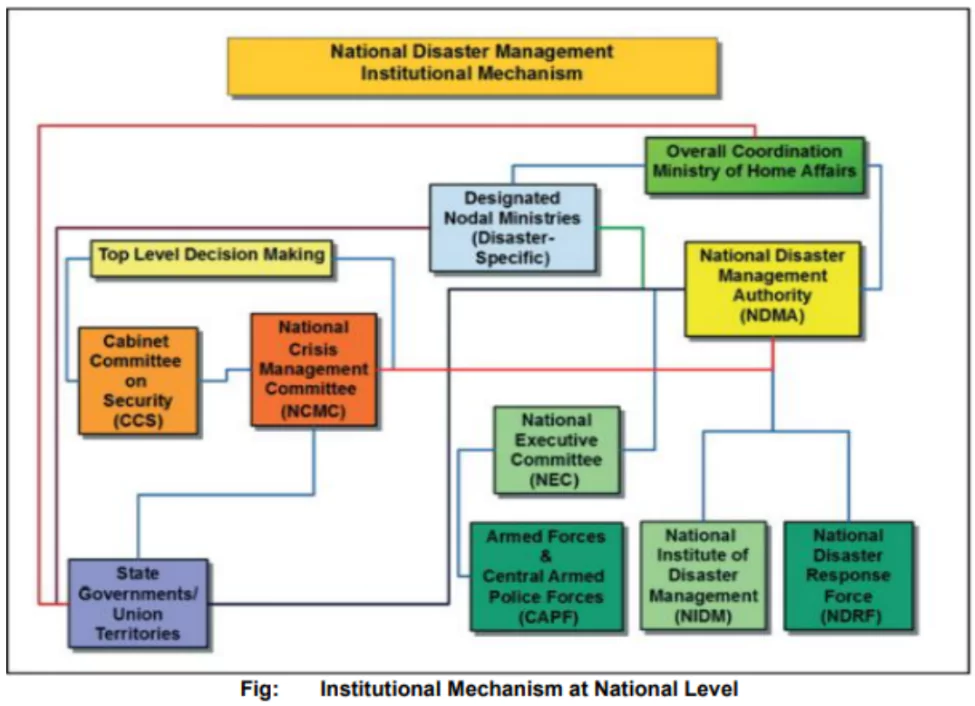 The Administrative Reforms Commission’s 3rd Report titled ‘Crisis Management: from Despair to Hope’ has recommended a new entry, “Management of Disasters and Emergencies, natural or manmade” be included in List III (Concurrent List) of the Seventh Schedule of the Constitution.
The Administrative Reforms Commission’s 3rd Report titled ‘Crisis Management: from Despair to Hope’ has recommended a new entry, “Management of Disasters and Emergencies, natural or manmade” be included in List III (Concurrent List) of the Seventh Schedule of the Constitution.
Name |
Members |
Roles |
| Cabinet Committee on Security (CCS) | Prime Minister; Minister of Defence; Minister of Finance, Minister of Home Affairs, and Minister of External Affairs | To oversee all aspects of preparedness, mitigation and management and Review risks of Chemical, Biological, Radiological and Nuclear (CBRN) emergencies and of disasters with security implications. |
| National Crisis Management Committee (NCMC) | Cabinet Secretary/Chairperson Secretaries of Ministries /Departments and agencies with specific DM responsibilities |
|
| National Disaster Management Authority (NDMA) |
|
|
| National Executive Committee (NEC) |
|
To assist the NDMA in the discharge of its functions;
|
| National Disaster Response Force
(NDRF) |
It is a specially trained force headed by a Director General
|
Provide assistance to the relevant State Government/District Administration in the event of an imminent hazard event or in its aftermath |
The newly constituted European Commission (EC), the executive arm of the European Union, elected Ursula von der Leyen, the EC’s first female President, for a second term.
The selection of the European Commission (EC) President involves a two-stage process aligned with the results of the parliamentary elections:
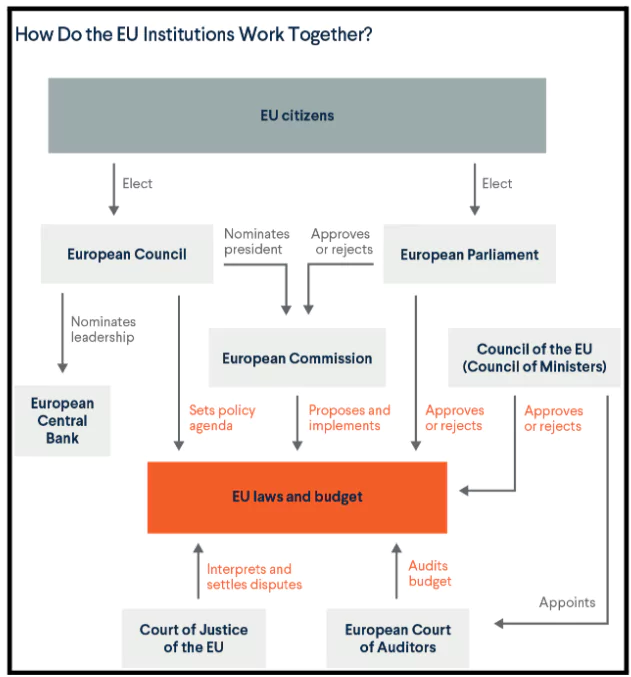 The European Council, consisting of leaders from the EU’s 27 member countries, proposes and elects a candidate for the EC President.
The European Council, consisting of leaders from the EU’s 27 member countries, proposes and elects a candidate for the EC President.
There are 4 main decision-making institutions which lead the EU’s administration. These institutions collectively provide the EU with policy direction and play different roles in the law-making process:
Their work is complemented by other institutions and bodies, which include:
India-EU Relation
|
|---|
Recently, Following the death of three UPSC aspirants at a coaching centre in Delhi , police arrested seven people
All ‘Murders’ are ‘Culpable homicides’ but all ‘Culpable homicides’ are not Murders:
| Murder | Culpable Homicide | |
| Definition | Murder is a subset of culpable homicide. It involves causing death with one of several specific intentions or knowledge, such as the intention to cause death or cause such bodily injury that the perpetrator knows is likely to cause death. | It refers to an act where a person causes the death of another with the intention of causing death or with the intention of causing such bodily injury as is likely to cause death, or with the knowledge that his act is likely to cause death, but without the circumstances that qualify it as murder. |
| Knowledge | The act is done with such knowledge and in such circumstances that the perpetrator must know it is so imminently dangerous that it must, in all probability, cause death or such bodily injury that is likely to cause death. | The perpetrator is aware that their actions are likely to result in death, even if death was not the primary intent. |
| Intent | The act is committed with a clear intention to cause death or cause bodily injury that the perpetrator knows is likely to cause death. | The act is done with the intention of causing death, causing such bodily injury that is likely to cause death, or with the knowledge that the act is likely to cause death. |
| Circumstances and Exceptions | Aggravating Factors: It includes situations where the act is committed with premeditation, with extreme recklessness, or with cruel intentions. | Mitigating Factors: It includes situations where the act is committed without premeditation or in the heat of the moment, such as during sudden and grave provocation.
|
The Defence Acquisition Council (DAC) reviewed and approved amendments to the deal for 31 MQ-9B High Altitude Long Endurance (HALE) Unmanned Aerial Vehicles (UAV) from General Atomics of the US.
The DAC has accorded Acceptance of Necessity (AoN) for the procurement of ALNS for AFVs of the Army.
| MQ-9B Drone and Acceptance of Necessity (AoN):
About MQ-9B Drone Overview
Acceptance of Necessity (AoN):
|
|---|
Defence Acquisition Council
|
|---|
The Delhi-based Centre for Science and Environment recently evaluated the metrics used in the National Clean Air Programme (NCAP).
They found the current methods for assessing city performance to be inadequate.
To accurately evaluate the performance of the 131 cities under NCAP, XV-FC, and SVS assessments, there is a need for new, robust metrics.
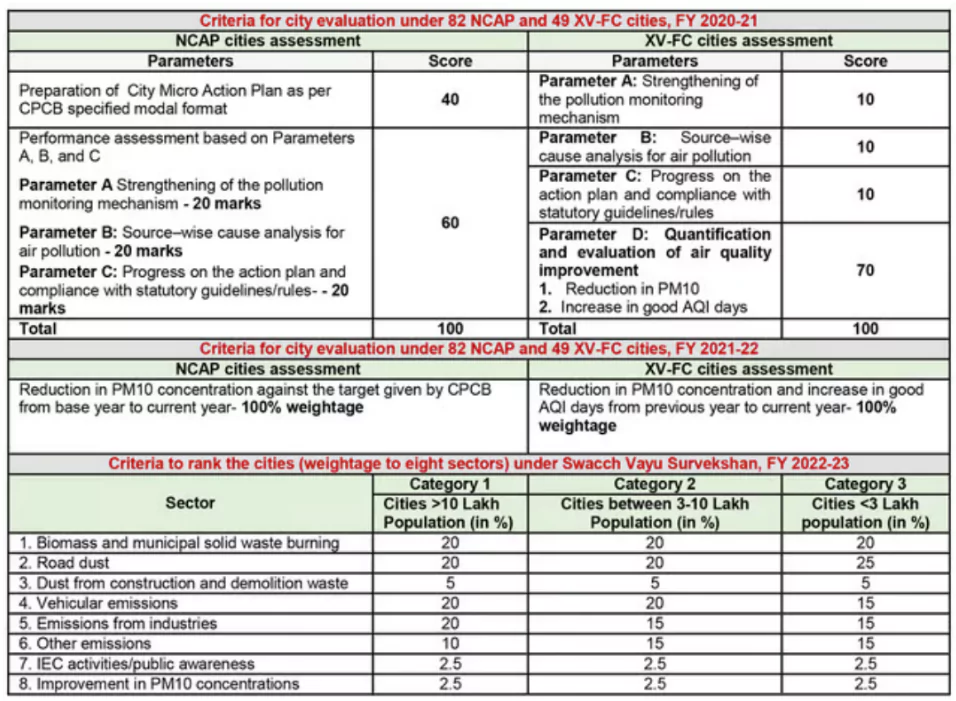 Insufficient Weighting: The low importance assigned to PM10 reduction undervalued efforts to improve air quality.
Insufficient Weighting: The low importance assigned to PM10 reduction undervalued efforts to improve air quality.
Acts Related to Air as a Natural Resource
|
|---|
Various Indian cities are experiencing severe flooding, highlighting systemic issues in urban planning and drainage infrastructure.
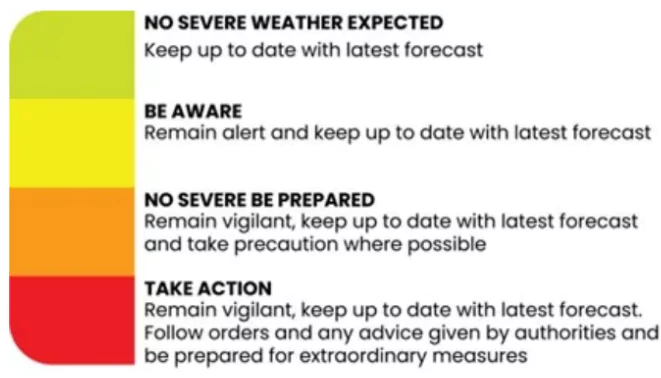
For more than 15 years now, Indian cities are struggling to manage monsoon rains. Maximum casualties are caused by overflowing nullahs, incidents of wall or building collapse and electrocution.
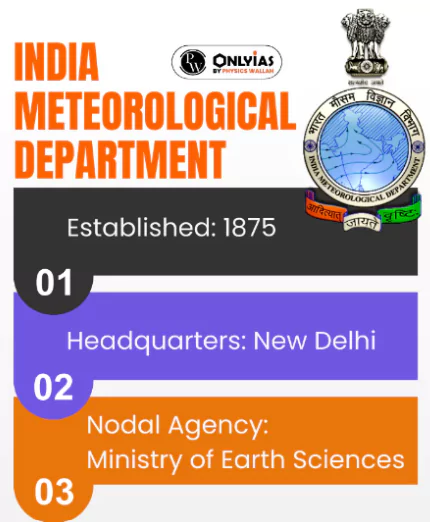 In Pune, three people lost their lives after receiving an electric shock in a waterlogged part of the city.
In Pune, three people lost their lives after receiving an electric shock in a waterlogged part of the city.The flooding of land or property in a built environment, especially in densely populated cities where rainfall exceeds drainage systems’ capacity, is known as urban flooding.
Following factors are responsible for urban flooding in India:
 Most of the time, these developments take place on encroachments over lakes, wetlands, and riverbeds.
Most of the time, these developments take place on encroachments over lakes, wetlands, and riverbeds.
Various actions taken by the Indian Government to tackle the issue of urban flooding in India are as follows:
Various issues are faced by Indian cities and its citizens due to urban flooding:
To tackle the challenge of rising urban flood in India, following measures are suggested:
<div class="new-fform">
</div>